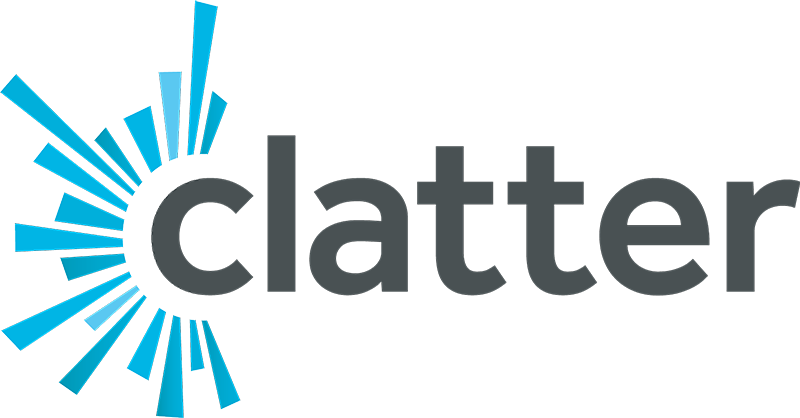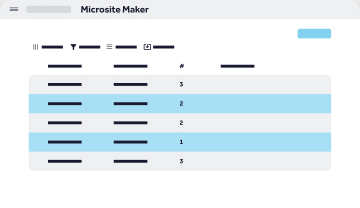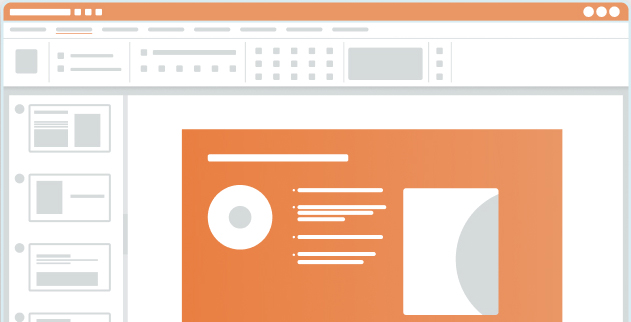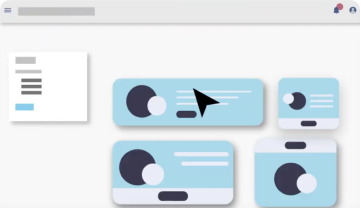In-person events are experiencing a major resurgence. According to recent industry data, 78% of organizers identify in-person events as their organization’s most impactful marketing channel. Trade shows, conferences, product launches, and field marketing events are all on the rise – and for good reason. Nothing replaces the power of face-to-face connection.
But great events don’t just happen. Behind every successful conference booth, every productive client meeting, and every effective follow-up campaign is a set of well-planned marketing materials. The challenge isn’t just knowing what you need – it’s creating everything fast enough to meet aggressive timelines while maintaining quality and brand consistency.
This guide breaks down the essential marketing materials for events across three critical phases: before, during, and after. No fluff, just what actually works.
Pre-Event Materials That Drive Attendance
Your pre-event materials have one job: get the right people to show up. Whether you’re promoting a 5,000-person conference or a 20-person executive dinner, these materials set the tone and drive registration.
Event Invitations
Digital invitations have largely replaced printed ones for speed and tracking capabilities. The key is personalization – generic blasts get ignored. Modern email platforms allow you to customize invitations based on recipient data, from including their name and company to tailoring the value proposition based on their industry or role.
Keep invitations scannable. Busy executives will spend 10 seconds deciding whether to register. Lead with the value proposition, make the date and location immediately visible, and include a prominent call-to-action. If your event requires explanation, your invitation is too complex.
Landing Pages
Dedicated event landing pages consistently outperform general website pages for conversion. They eliminate distractions and focus attention on a single goal: registration.
Essential elements include a clear agenda that shows the value of attending, speaker credentials that establish authority, and frictionless registration. Mobile optimization isn’t optional anymore – mobile-first design is now essential for event registration. If your landing page doesn’t work perfectly on mobile, you’re losing attendees.
Some teams are moving toward event microsites for larger conferences. These provide more room for detailed agendas, speaker bios, sponsor information, and FAQs without cluttering the main registration page.
Email Sequences
A single invitation email rarely drives maximum attendance. Effective campaigns use a sequence: announcement, reminder, and last call. Each email serves a different purpose and speaks to recipients at different stages of their decision-making process.
Segment your sequences by audience type. Prospects need different messaging than existing customers. VIPs require a more exclusive tone than general attendees. The fundamental question each email must answer is simple: “Why should I care?” Address that directly, and your response rates will climb.
Social Assets
Social media extends your event’s reach beyond your email list. Platform-specific sizing matters – what works on LinkedIn looks terrible on Instagram Stories. Create assets in the native formats for each channel you’re using.
Speaker spotlights and countdown graphics build momentum as the event approaches. The most effective social assets are designed to be shareable, encouraging attendees to repost and amplify your message to their networks.
On-Site Materials That Make an Impact
Once people arrive at your event, your materials need to work in a completely different context. Attention spans are short, competition for eyeballs is fierce, and you often have seconds to make an impression.
Booth Presence
Your booth is your physical brand presence, so consider it part of your marketing materials for events. The backdrop and signage need to be bold, simple, and readable from 15 feet away. Overcomplicated designs fail on the trade show floor. Stick to clear messaging, strong visuals, and high contrast.
Digital displays add movement and flexibility. They let you rotate messages, showcase video, and update content without reprinting anything. Wayfinding elements – directional signs, floor graphics, hanging banners – help attendees find you in crowded venues.
Programs and Agendas
Digital programs reduce waste and allow for last-minute updates, but many attendees still prefer printed versions they can mark up and reference throughout the day. Consider offering both.
The primary function of a program is navigation. Clear session descriptions, accurate room locations, and time blocks prevent confusion. Include brief speaker bios to help attendees prioritize which sessions to attend. Don’t forget sponsor recognition – these partners made the event possible.
Collateral for Conversations
On a busy trade show floor, one-pagers beat multi-page brochures. People won’t read War and Peace while standing in an aisle. Concise product sheets work better for technical conversations. Case studies provide credibility when prospects ask “Who else uses this?”
Apply one simple rule: if attendees won’t read it on the spot, make it easy to take home. That means lightweight, professionally designed pieces that fit in a bag without getting destroyed.
Giveaways That Actually Get Used
Novelty wears off fast. Functional items get used repeatedly and keep your brand visible long after the event ends. Tote bags, quality drinkware, and well-made pens consistently perform better than cheap tchotchkes.
Tech accessories are particularly valuable at conferences and trade shows. Phone chargers, USB drives, and webcam covers solve real problems attendees face. Business cards still matter for quick information exchanges, despite predictions of their demise for the past decade.
Presentation Decks
Here’s a challenge most event marketing guides ignore: creating customer-specific presentations on-site or immediately before the event.
Sales teams constantly need materials they can customize for specific prospects. A hot lead requests a meeting for tomorrow morning. A customer wants to see a proposal tailored to their use case. A partner needs slides they can present to their team. Generic decks don’t close deals, but waiting three days for marketing to create something custom means lost opportunities.
The best sales enablement happens when teams can quickly customize pre-approved presentation templates themselves – maintaining brand standards while adapting content to specific situations.
Post-Event Materials That Extend ROI
The event doesn’t end when attendees leave. In fact, some of the most valuable opportunities happen in the days and weeks following the event. Your post-event materials determine whether all that investment translates into actual business results.
Follow-Up Sequences
Send thank-you emails within 24 hours while your event is still top of mind. Speed matters here. The longer you wait, the more your event fades into background noise.
Segment follow-ups by engagement level. Someone who attended three sessions and spent 20 minutes at your booth deserves different messaging than someone who briefly stopped by. Include relevant resources based on the conversations that happened – if a prospect asked about a specific feature, send information about that feature.
Nurture Content
Event recap blogs and social posts keep momentum going for weeks after the event ends. They serve multiple purposes: showing attendees they participated in something valuable, demonstrating thought leadership to those who couldn’t attend, and creating content assets you can use for next year’s promotion.
Video highlights work particularly well. Short clips of keynote moments or speaker insights are highly shareable and give virtual audiences a taste of what they missed.
For leads generated at the event, create customized follow-up materials based on specific conversations. This might include tailored proposals, relevant case studies, or presentations addressing questions that came up during initial discussions.
Next-Year Promotion
Start planning for next year immediately. Capture testimonials while enthusiasm is high. Document success metrics that prove the event’s value. Collect photos and footage you can use in future marketing materials for events.
Early-bird campaigns for the following year’s event can launch just weeks after this year’s event ends. Strike while the experience is fresh and attendees are thinking about what they learned and the connections they made.
The Real Challenges
Creating effective marketing materials for events isn’t conceptually difficult. The hard part is execution – particularly when you’re dealing with the realities of how events actually work. For 95% of events teams, demonstrating event ROI is now the top priority, which means every piece of content needs to work harder than ever.
Speed vs. Quality
Last-minute requests aren’t exceptions in event marketing – they’re the norm. A client requests a meeting and needs customized materials by tomorrow. Regional teams need localized versions of your core presentation. Sales identifies a hot prospect and wants something tailored to their industry.
When all your marketing material for events needs custom design work, marketing becomes a bottleneck. Sales teams can’t wait three days for a deck. Opportunities get missed because materials aren’t ready in time. The tension between maintaining quality and moving fast enough creates constant friction.
Consistency at Scale
Multiple events mean multiplied material needs. A company running 50 field marketing events needs 50 sets of localized materials. Field marketing events are on the rise, with more organizations investing in smaller, regional experiences that require tailored content. Regional teams require content adapted to their markets. Each event has unique speakers, agendas, and messaging angles.
Brand standards start slipping when teams are rushing to meet deadlines. Different designers interpret brand guidelines differently. Files get versioned incorrectly. Someone uses an outdated logo. Suddenly, your materials don’t look like they’re from the same company.
The Customization Problem
Generic materials don’t close deals. Every prospect needs something that speaks to their specific situation, industry, and challenges. Sales teams know this instinctively – that’s why they constantly request customized materials.
But customization takes time. Creating a unique version of a presentation for one prospect doesn’t scale when you have dozens of prospects. Marketing teams can’t keep up with the volume of requests. Sales teams get frustrated waiting. Prospects receive materials that feel generic because that’s all anyone had time to create.
The fundamental tension: customization is necessary but traditional creation processes make it impractically slow.
What Smart Teams Do Differently
Organizations that execute event marketing well approach the materials challenge differently. They don’t necessarily have bigger teams or larger budgets. They’re just smarter about how materials get created.
Build a Content Library
Centralize approved templates, assets, and content in one accessible location. When everything lives in different folders, on different drives, or in different people’s email threads, teams waste enormous time searching for files – and often end up recreating things that already exist.
A proper content library is easy to find, easy to use, and stays current. When you update a logo or change messaging, you update it once and the change propagates everywhere. No more tracking down 17 different versions of the same slide deck.
Template-First Thinking
Pre-designed frameworks maintain quality while enabling speed. Instead of starting from scratch every time, teams work from templates that already follow brand guidelines. The structure and design are locked; only the customization points are flexible.
This allows non-designers to create professional marketing materials for events. A sales rep can swap in customer-specific examples without accidentally breaking the layout. A regional marketing manager can localize content without needing to understand design principles. Quality stays consistent because the design decisions have already been made.
Empower the Field
Sales and regional teams shouldn’t need to wait on marketing for simple updates. When field teams can create and customize materials themselves – within appropriate guardrails – bottlenecks disappear.
This isn’t about cutting marketing out of the process. It’s about freeing marketing to focus on strategy, high-value creative work, and maintaining the systems that enable everyone else. Production tasks that don’t require design expertise should be self-service.
Teams that implement these approaches report significant time savings on material creation – time that can be redirected toward activities that actually require marketing’s strategic expertise.
Moving Forward
Events represent high-stakes, high-visibility moments for organizations. The materials supporting those events need to work – driving attendance beforehand, facilitating conversations during, and extending impact afterward.
The challenge isn’t understanding what materials you need. The challenge is creating everything fast enough without sacrificing quality or consistency. Traditional approaches struggle with this tension because they weren’t designed for the speed and scale modern event marketing requires.
The best teams solve for both speed and quality by changing how materials get created in the first place. They build systems that maintain standards while enabling the people closest to customers – sales teams, regional marketers, field teams – to create what they need when they need it.
It’s not about doing more work. It’s about being smarter with how the work gets done.
Want to see how we can help with your sales and marketing material for events? Click here to talk to our team.




